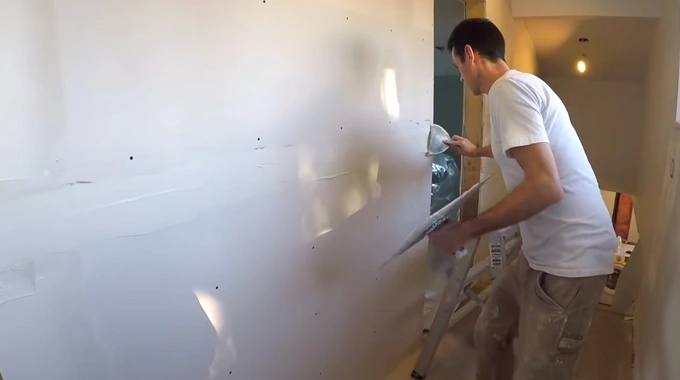Last Updated on March 19, 2023
Trying to figure out how long drywall mud will take to set? It’s not an exact science as a number of different variables like the type you’re using, your application technique, and temperature affect drying time.
With wet mudded seams, you can expect to wait a day or 24 hours before moving on with your project. But if you opt for dry mud instead, re-coating can take just 12 hours.
Keep in mind, though, that humidity and the thickness of your layer will affect drying time but adding primers or fillers could speed up this process considerably.
Creating a perfect finish for your walls can take some time, but with the help of drywall mud, you’ll be able to smoothly seal and protect in no time. We’re sharing how different applications affect drying times so that you make sure everything is just right.
Average Times for Drying Different Types of Drywall Mud
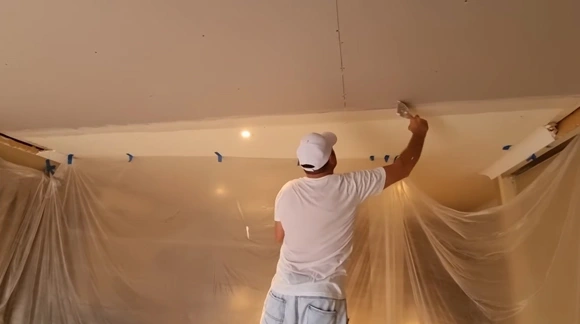
Drywall mud comes in two main forms: dry and wet. Understanding the drying times for different kinds of drywall mud can help you save time during your project and ensure that your wall is well-sealed.
1. Wet Mud:
Wet mud is often referred to as premixed or ready-mixed compound and it needs 24 hours until it can be recoated with another layer of drywall mud. This type of drywall mud requires 1-2 hours to touch (meaning becomes firm enough to walk on without leaving footprints).
After 3 days, it’s ready to be sanded down if necessary. Given that it’s more labor-intensive than wet mud, this type of drywall mud is not recommended for larger projects or inexperienced professionals.
2. Dry Mud:
Dry drywall mud comes in powdered form and is known as a setting-type joint compound because it sets quickly once mixed with water. It usually takes between 15 and 30 minutes for this variety of mud to touch up before recoating after 12 hours and sanding after 48 hours.
Due to its thick consistency when mixed with water, powdered drywall mud may require more skill when applying it than its wet counterpart due to its fast-drying nature. This powdered joint compound suits larger projects and is favored by experienced professionals.
Average Times for Drying Drywall Mud depending on Applications
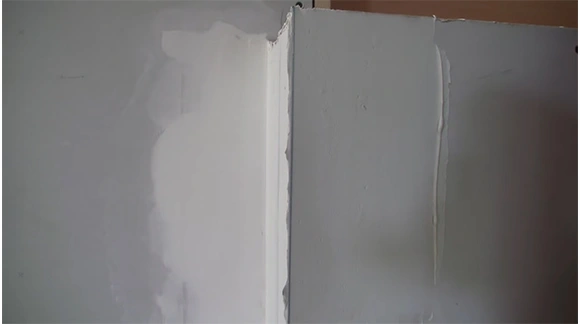
Drywall mud, also known as joint compound or spackling paste, is a type of adhesive material used for filling and finishing seams, screw holes, and other imperfections in drywall. Depending on the application, the average drying time of drywall mud can vary from a few minutes to several hours.
1. Drywall Seams:
When filling seams between two pieces of drywall panels, the average drying time for the joint compound is 24 hours.
This drying time can be drastically reduced by mixing other materials into the joint compound, such as plaster or latex-based additives. These additives help speed up the drying process, usually only taking around 12 hours and make sure that any exposed surfaces are safe for painting or other decorative finishes.
2. Filled-in Screw Holes:
For screw holes that have been filled in with drywall mud, it typically takes 1-2 hours before they become completely solidified and ready for sanding down. This is because there’s less surface area for the mud to cling to in these areas which causes it to quickly evaporate during the drying process.
3. Skim Coats:
Skim coats are an important part of finishing a wall surface with joint compound and typically require 15-20 minutes of drying before they are ready for sanding or painting.
These coats are thin layers of joint compound applied over an entire wall surface that help create a smooth finish suitable for paint or wallpaper application. Take care not to apply too much skim coat material onto your wall surface, as this could lead to uneven drying and cracking once it has finished setting.
Some Factors That Influence Drying Time
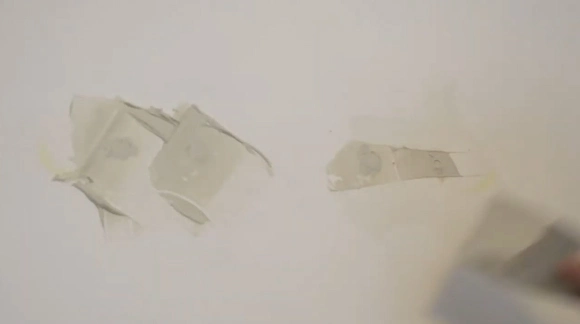
When painting, staining or wallpapering a surface, it is helpful to understand the factors influencing drying time. Understanding these factors or elements can help you plan your project timeline more accurately and ensure the successful completion of your projects.
1. Temperature:
Temperature plays a key role in determining how quickly or slowly drywall joint compound will dry. Higher temperatures (upper than 65°F) will result in faster drying times for materials such as paint, plaster, or drywall mud.
On the other hand, lower temperatures can significantly increase the amount of time needed for these materials to dry properly. This is because warmer air is capable of holding more moisture than cooler air, and so drying is accelerated by increased heat transfer from the surrounding environment.
2. Humidity:
Humidity levels also play an important role in determining how fast a material dries. Higher levels of humidity (upper than 70%) can slow down evaporation rates resulting in slower drying times for these materials.
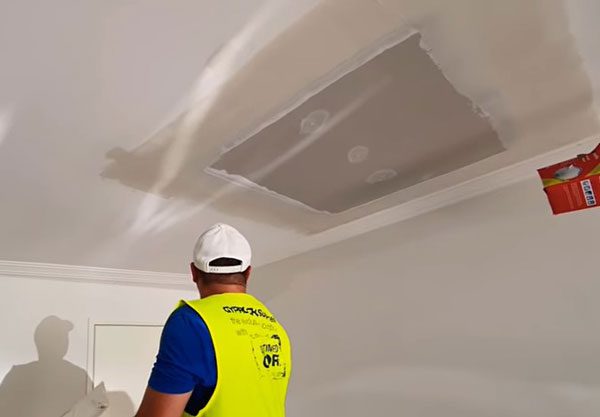
Humid conditions mean slower drying times due to slower evaporation rates. This is because moisture already exists within the air so it takes longer for additional molecules on surfaces to evaporate into it due to saturation levels being reached faster at higher humidity levels.
3. Thickness of the Layer of Drywall Mud:
The thickness of the layers applied also influences how quickly or slowly drywall mud will dry. To ensure maximum durability and safety, it takes extra effort to properly dry out materials with multiple layers.
For the greatest user safety, thicker layers need to be thoroughly hydrated for a longer period of time before being used. Applying heat helps penetrate through the thicker surfaces so that not a single layer is compromised, and no smudging or deteriorating is allowed.
4. Air Circulation:
Good air circulation can help you dry out all those wet items fast! Whether through natural or artificial means, moisture particles will be dispersed from around your drying objects so they become nice and toasty just as quickly too.
With better ventilation, the moisture in this area will evaporate quicker than before, resulting in faster drying times.
5. Type of Drywall Mud Used:
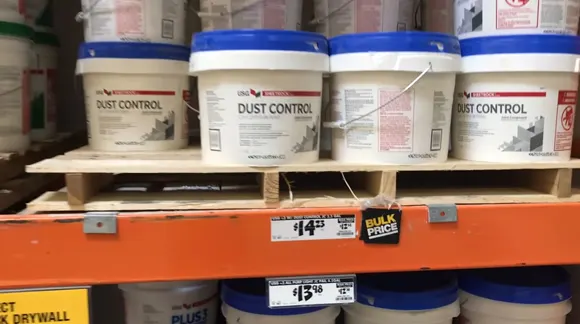
The type of mud used is one major factor that influences the drying time. Different types of drywall mixtures have different levels of water content which can lead to variations in drying times.
For instance, pre-mixed all-purpose joint compounds contain more water than setting-type joint compounds and therefore take longer to dry fully between coats. Additionally, lightweight formulas usually require less water than heavy bodied ones, so they tend to have shorter drying times.
6. Primer Applied Before Applying Drywall Mud:
The use of primer prior to application can increase your drying time overall. Primer provides an even canvas for the finishing layer and ensures that it has a longer lifespan by enhancing adhesion between surfaces.
However, this extra step means more time before completion so although its benefits are noteworthy, planning with this in mind will make all the difference.
7. Number of Coats Applied:
The number of coats also affects how long it takes for drywall mud to dry completely before finishing and painting. Each layer needs extra time to adhere to those underneath it and build strength before it can support its own weight without sagging or cracking.
8. Quality and Amount Of Additives In The Mix:
Adding additives to your drywall compound can affect drying times dramatically since they help bind particles together to form a strong bond that won’t crack or crumble over time.
If you’re using additives, then you’ll need to factor in how long it will take to complete your project from start to finish, not just from one coat until it’s ready to paint.
How Do You Make Drywall Mud Dry Faster?
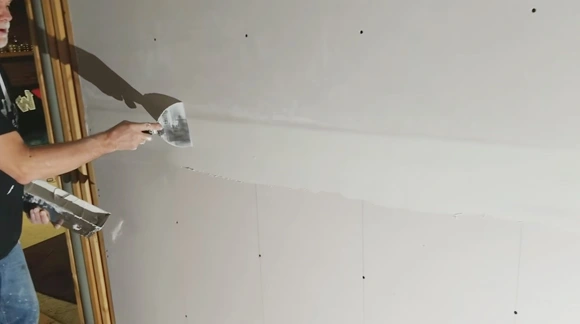
Making drywall mud dry faster is a crucial step in creating a smooth and flawless finish when completing any drywall project. There are several methods to ensure the mud dries quickly so that sanding and painting can begin right away.
These include using hot mud, adding chemical accelerators, using dehumidifiers, applying thinner coats, high room temperature, high air circulation and applying mechanical fans. Here we will explore these techniques in more detail to help you achieve the best results with your projects.
1. Use Hot Mud:
Hot mud is premixed drywall joint compound that comes at a much higher temperature than standard compounds. This helps to rapidly set the mud, allowing for a speedy finish on any project.
When using hot mud, it is important to wear gloves as the high temperatures can cause skin irritation and burns. To apply it, use a putty knife or trowel to spread the hot joint compound over seams or joints between drywall sheets.
For large areas, use a hawk and trowel together to distribute the compound more while it is still wet. As hot mud sets and hardens quickly, be sure to keep working until the finishing touches are complete before the compound has time to cool off and become too hard to work with anymore.
2. Chemical Accelerators:
Chemical accelerators are additives that can be stirred into regular joint compounds or added directly onto wet surfaces in order to speed up drying time on any repair job or installation project.
These accelerants work by increasing the evaporation rate which causes the water in the compound to evaporate faster than usual without compromising the quality of the finish or long-term durability of the product.
It is also important not to use too much accelerator as this could have adverse effects on drying time as well as the overall quality of the finished product if used incorrectly.
3. Dehumidifiers:
Installing dehumidifiers around an area with wet walls can also help speed up drying time for drywall joints and patches.
By lowering humidity levels, dehumidifiers allow for quicker evaporation of water from the mortar mixture which helps it set much more quickly than if left exposed in a higher humidity environment.
4. Thinner Coats:
Applying a thin coat of the joint compound will greatly reduce drying times compared with thicker applications which take longer to reach the same level of dryness.
Thinner coats also mean less sanding which saves time since sanding requires a considerable amount of effort when working on large area projects such as full-room renovations.
Don’t skimp on quantity when covering large gaps between sheets of sheetrock, even though thin coats are being applied instead of the thick ones traditionally used.
5. Raise Room Temperature:
Raising the temperature in the room where the drywall mud has been applied is one of the most effective ways to quicken its drying time. The ideal temperature for speeding up the drying process of drywall mud is between 65-80 degrees Fahrenheit (21-26 degrees Celsius).
By increasing the heat in the room, it will allow moisture present in the material to evaporate faster, thereby reducing its overall drying time. However, if you raise the temperature too high, over 86 degrees Fahrenheit (30 degrees Celsius), you could damage your walls or other surfaces.
To avoid this problem, consider installing a thermostat so that you have more control over regulating temperatures within your home or workspace.
6. Increase Air Circulation:
Increasing air circulation in a room can also help speed up the drying time of drywall mud significantly. It works because higher levels of air movement mean quicker evaporation, resulting in faster drying times for your wall panels.
You can do this by opening the windows and doors, but this might not be enough if you live somewhere with low outdoor temperatures or humidity levels.
7. Mechanical Fans:
With natural ventilation not always cutting it, take a look at installing the latest mechanical fans that can be linked directly into your heating/cooling ducts. Alternatively, why not go for an adjustable and portable exhaust fan to get exact air circulation levels without taking away from your comfort?
Dial up speed settings with ease no matter where you’re working. There’ll be no need to move around furniture or other items when adjusting airflow.
Will Drywall Mud Crack If It Dries Too Fast?
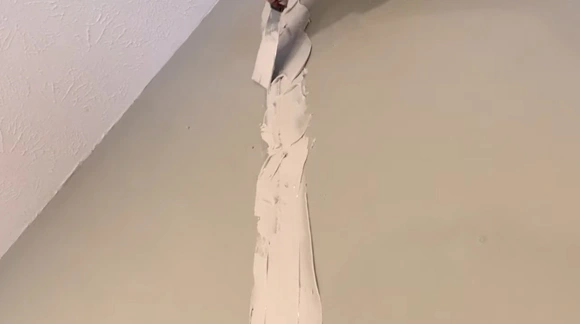
Applying joint compound correctly is no guarantee against those pesky cracks. As the water evaporates from Drywall Mud, it shrinks and can cause small shallow fractures on your wall, ultimately leaving you feeling frustrated.
Can You Only Do 2 Coats of Drywall Mud?
While two coats of drywall mud are usually sufficient when sealing up joints between sheets of drywall or filling small holes and cracks, three coats may be required if you want complete shrinkage coverage.

To give yourself a better finish, it’s best to use three thin layers instead of two thick ones. For extra large gaps or deep holes in your walls, you can even go up to four coats of drywall mud if needed.
How Many Coats of Drywall Mud Can You Do in One Day?
If you are new to using drywall mud or are skim-coating an entire wall or room, then it is doable, though not recommended to apply one coat in one day.
It’s best practice to wait 24 hours between applications so that each layer has enough time to harden before more material is added on top of it. That being said, experienced contractors can usually complete 3 coats in one day, provided they have the appropriate tools and take regular breaks throughout the job.
Does Drywall Mud Need Heat to Dry?
If the temperature falls below 65 degrees Fahrenheit then additional heat may be beneficial to accelerate drying so that subsequent coats can be applied sooner than later.
In most cases, drywall mud does not need any additional heat upper than 65° Fa in order to dry properly since its drying process occurs through evaporation at normal room temperature.
Unlock the Secrets of Speeding Up Drywall Mud Drying Time in Minutes
Drying time for drywall mud varies depending on several factors like temperature, humidity, type of mud used, and more. Wet mud takes longer to dry than pre-mixed with additives due to its higher water content.
Additionally, thicker layers tend to take longer to dry than thinner ones. To ensure your walls are ready for painting or other processes faster, using suitable additives such as primers or fillers can help quicken the drying process significantly.
So, you should consider all these different factors when working with drywall mud to ensure that your tasks are completed in time without compromising quality.
